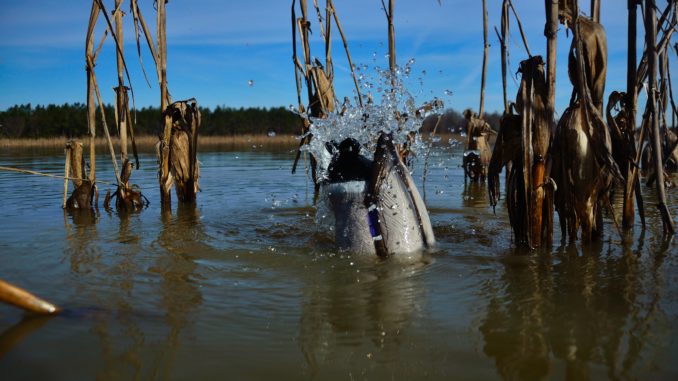
Adding motion to a decoy spread is one of the best ways to make 100 duck-looking chunks of plastic appear to be alive. Until the invention of electrically powered devices, motion came from wind or from manually tugging on a string of decoys.
It worked then and still works for many waterfowl hunters, but there are plenty of devices running on batteries to add realistic action into a decoy spread. While these motorized decoys will bring birds in, they can also produce the opposite effect.
From swimmers, vibrators and spinners to the violent splashers, any type of motion device to simulate a flock of dabbling ducks will usually make a positive difference, especially when the birds are 250 feet high and 250 yards away.
Ducks use keen eyesight, speed and agility to avoid predators while traveling, but their eyesight is paramount to find food and stay alive.
Beginning in the 1990s, motion duck decoys arrived on the scene, with the Mojo Mallard stepping up to the plate as one of the first commercially produced, spinning-wing decoys. The spinning-wing decoy brought huge advantages to the waterfowl hunter by adding constant motion to the decoy spread. Spinning-wing decoys emulate ducks landing, and that white flash can be recognized from well over 1,000 feet away.
In recent years, however, hunters are reporting the spinning-wing decoys are often causing flocks to flare on their descent. Charlton Thornton of Captain Froggy’s Guide Service has been using them in his decoy spreads ever since they hit the mark. But he does it with one caveat.
“We use Mojos when we can. Sometimes they work very well, but other times they have the opposite effect,” said Thornton. “We put them up and if the ducks flare, we take them down immediately.”
New technology or the old decoy-on-a-string trick might convince a flock of ducks to make a fatal commitment, but if it doesn’t work, know when to stop.



Be the first to comment